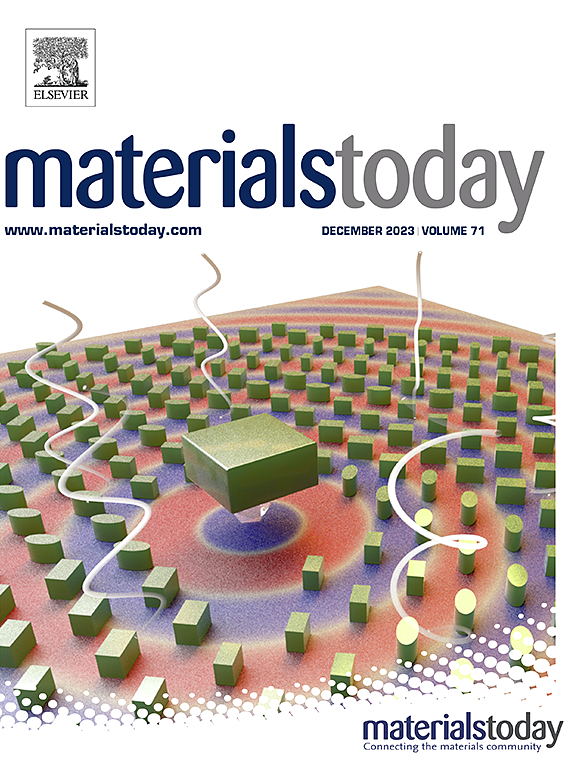Phase transition in two-dimensional monolayer (1L)-molybdenum disulfide induced by atomic S-basal plane gliding via synchrotron X-ray monochromatic beam radiation for superior electronic performance
IF 21.1
1区 材料科学
Q1 MATERIALS SCIENCE, MULTIDISCIPLINARY
引用次数: 0
Abstract
Here, we report a novel approach to reduce the channel resistance by inducing a phase transition behavior from 2H to 1T in a monolayer MoS2 (1L-MoS2) by a synchrotron X-ray monochromatic beam (mono-beam) radiation. The effects of the biphase structure by the mono-beam on the 1L-MoS2 film were investigated using Raman spectra, photoluminescence (PL) spectra, scanning tunneling microscopy, and scanning tunneling spectroscopy, respectively. Through material characterization, we identified that the lateral sliding of S-vacancies along the S-plane in the 1L-MoS2 is the key reason for the origin of unidirectional phase transition. The precise phase engineering triggered by the mono-beam radiation process allows the realization of field-effect transistors (FET) with 2X improvement in mobility toward a high on/off ratio (∼108) and a near-ideal subthreshold swing of ∼88 mV per decade. The validity of the phase engineering could be further extended for its application as a memory device, exhibiting a gate tunable conduction modulation behavior and a high resistance ratio of ∼ 102 at a gate bias of 5 V with endurance of ∼100 cycles. Furthermore, an artificial neural network using the synaptic weight update with accuracy of ∼93 % was achieved.

同步加速器x射线单色束辐射下原子s基面滑动诱导二维单层(1L)-二硫化钼的相变,以获得优异的电子性能
在这里,我们报道了一种通过同步加速器x射线单色束(mono-beam)辐射诱导单层MoS2 (1L-MoS2)从2H到1T的相变行为来降低通道电阻的新方法。利用拉曼光谱、光致发光(PL)光谱、扫描隧道显微镜和扫描隧道光谱研究了单束双相结构对1L-MoS2薄膜的影响。通过材料表征,我们发现1L-MoS2中s -空位沿s平面的横向滑动是产生单向相变的关键原因。由单束辐射过程触发的精确相位工程使得场效应晶体管(FET)的迁移率提高了2倍,达到高开/关比(~ 108)和接近理想的亚阈值摆幅(~ 88 mV / 10年)。相位工程的有效性可以进一步扩展其作为存储器件的应用,表现出栅极可调谐的传导调制行为和在5 V栅极偏置下的高电阻比(~ 102),持久时间为~ 100个周期。此外,使用突触权值更新的人工神经网络的准确率达到93%。
本文章由计算机程序翻译,如有差异,请以英文原文为准。
求助全文
约1分钟内获得全文
求助全文
来源期刊

Materials Today
工程技术-材料科学:综合
CiteScore
36.30
自引率
1.20%
发文量
237
审稿时长
23 days
期刊介绍:
Materials Today is the leading journal in the Materials Today family, focusing on the latest and most impactful work in the materials science community. With a reputation for excellence in news and reviews, the journal has now expanded its coverage to include original research and aims to be at the forefront of the field.
We welcome comprehensive articles, short communications, and review articles from established leaders in the rapidly evolving fields of materials science and related disciplines. We strive to provide authors with rigorous peer review, fast publication, and maximum exposure for their work. While we only accept the most significant manuscripts, our speedy evaluation process ensures that there are no unnecessary publication delays.
 求助内容:
求助内容: 应助结果提醒方式:
应助结果提醒方式:


